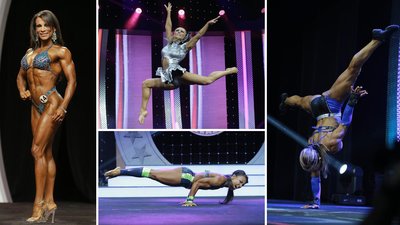Full confession: I love the fitness division, having covered it from its humble beginnings at a gym trade show back in the mid-'80s to the present. But here's something that may be more of a surprise: I'm also wildly enthusiastic about the sport's future.
For those of you not familiar with the fitness division, it's the second-oldest women's division, and it was developed to allow female athletes to show off their strength and athleticism, while still showing beautiful symmetry in that sequined two-piece.
Fitness experienced its heyday in the 1990s soon after it was first introduced, and peaked in popularity in the early 2000s before abdicating its throne to this decade's new favorite: the bikini division. Perhaps the reason you're not as familiar with fitness is because it's experienced a dip in popularity in the past few years.
However, there's never been a better time to get into fitness. If that surprises you—or if you're under the impression that physique's high-performance division is either dying or dead—it's time to refresh your browser.
What happened to fitness?
Anyone who follows women's physique competitions can tell you what first happened to fitness: Figure came along, followed by bikini. When fitness first hit the physique scene in the mid-'80s, women's bodybuilding was the only other game in town if you wanted to compete.
In addition to physique comparisons, the fitness division included routines performed to music and containing elements of dance, aerobics, strength, and gymnastics, attracting those competitors who didn't want to get "too big" in order to compete in bodybuilding, but also athletes from other sports. Anyone willing to put together a routine and get onstage could compete in fitness.
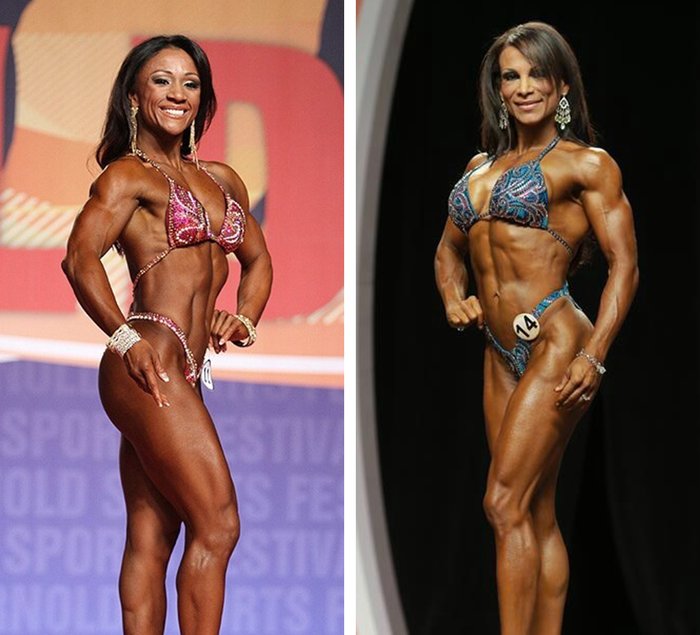
The sport attracted those with a background in bodyweight strength—namely gymnasts. Mia Finnegan, winner of the first Fitness Olympia in 1995, and Carol Semple, who won all the major titles in the mid-'90s, were both former gymnasts. But you didn't have to be a gymnast to win; you just needed incredible athleticism and an incredible physique, exactly what earned Tanji Johnson Bridgeman and eight-time winner Adela Garcia their titles on the Olympia stage.
NPC-IFBB head judge Sandy Williamson recalls the impressive numbers—over 75 onstage—at the first Fitness Nationals. These national level competitions typically fielded 50 or so fitness athletes throughout the '90s. Those were big stats for women back then.
Along came figure
The fitness division was flying high…and then figure hit the scene. The figure division was essentially fitness without the routines, which immediately appealed to a wider pool of potential athletes.
From the moment it hit the stage, figure was easier—both for competitors and promoters. Not everyone has the time or talent to excel in the challenging routines, and judging figure competitions took less time and space than judging fitness routines. The numbers of women competing in figure exploded, and within a few years figure was more popular than fitness ever was.
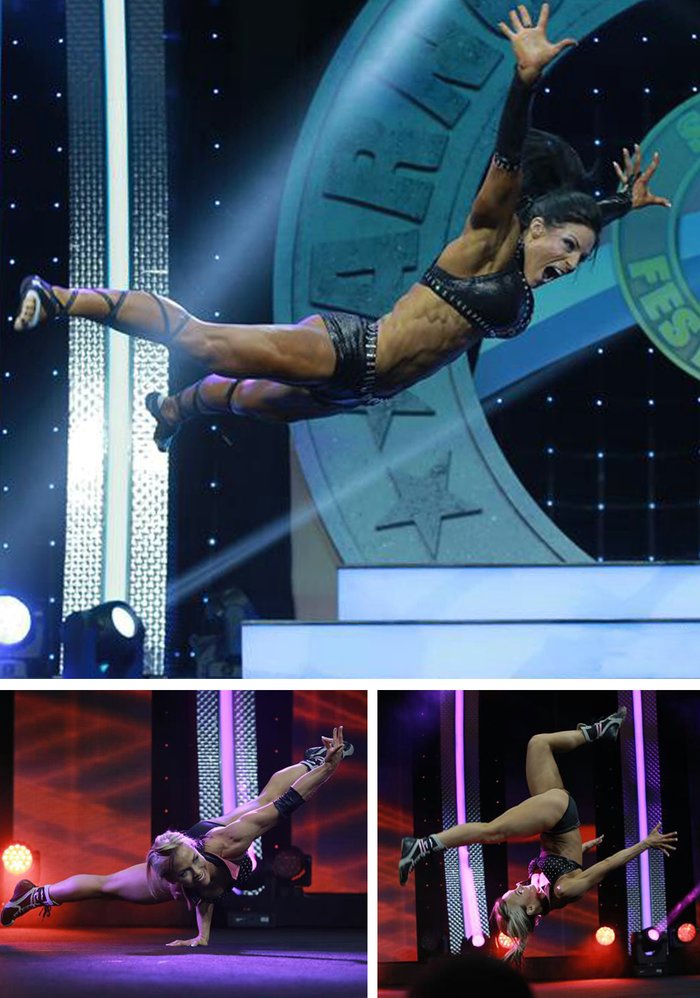
Competitor numbers in amateur fitness dropped precipitously, and along with them the opportunities to compete. Promoters won't buy trophies or make time or space for routines if the athletes don't show up.
While the national competitions and international events like the Amateur Arnold continued to award pro cards, the lower-level contests disappeared in many areas. And despite high-profile fitness champs like Tanji Johnson Bridgeman and Tracey Greenwood offering their assistance to up-and-coming amateurs, it became more and more difficult to find a coach as trainers were swamped with figure and later bikini clients. It was a self-perpetuating downward spiral.
You almost had to stumble into fitness, the way Michelle Blank did. "Most people in bodybuilding don't even know the requirements for a fitness competitor," says Blank, an IFBB pro and top-five finisher at the Fitness International. "I certainly didn't, even though I considered the sport in 2001. It wasn't until years later that my gymnastics coach asked if I had thought about bodybuilding, and I mentioned fitness. She knew Tracey Greenwood, and the rest is history."
The future of fitness, led by the pros
The women's fitness division is going strong at the professional level, in much better shape than it has been in years. Superstar Oksana Grishina may have retired last year, but she left behind a robust corps of talented veterans and some kick-ass newcomers in the IFBB Pro ranks.
Last year there were 16 competitors at the Fitness Nationals, the biggest lineup of three U.S. pro qualifiers, and 18 at the IFBB North American Championships.
And thanks to renewed efforts by promoters, officials, and the athletes themselves, the reports of its demise on the amateur level may have been premature.
Promoters are supporting the division in greater numbers than ever, and there are a dozen Olympia qualifiers on the 2018 schedule. While these numbers are not yet comparable to bikini, they are encouraging for an elite division that was offering only four or five shows per season not too long ago.
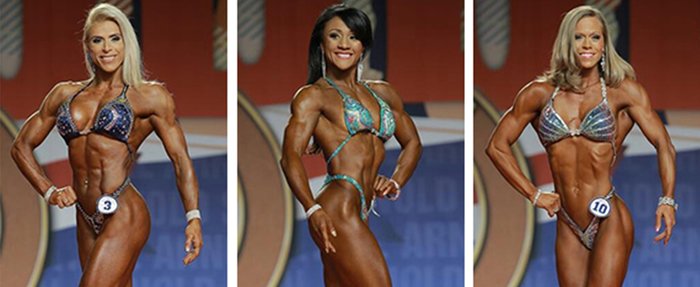
"You have every right to be encouraged," says NPC and IFBB Professional League official Tim Gardner, another self-professed lover of the division. "IFBB Professional League Fitness is here to stay."
Florida-based Gardener, who is a prolific promoter nationwide, is staging five pro fitness contests in 2018. He attributes his love of the division to having watched his daughter compete in gymnastics, and he believes it brings something special to his events.
"The entertainment level—along with the diversity, when the fitness routines come to life with their different themes—adds value to our productions," explains Gardener. "We always receive compliments for the positive energy that the fitness girls exude."
Despite the doomsayers, it seems pro fitness has survived as a marquee event. Even so, there's a problem in the amateurs, where the pipeline to the pros needs major repairs. The fix may lie in looking beyond the past.
Boosting numbers by changing focus
The consensus, fitness competitors and organizers say, is to think outside the box to recruit new athletes to the division.
"Promoting from within our organization does not help, as most people choose the other divisions because they're easier and less time consuming," says Blank. "Our division has not been promoted to individuals outside of the bodybuilding realm."
With numbers in mind, the NPC made a bold move this year by eliminating the physique round in amateur competition. Calls of heresy were swift when the rule change was announced last November. The National Physique Committee cutting the physique round?
"We just weren't seeing growth in fitness," says Williamson. "A lot of promoters have stopped offering it. Not so much the bigger promoters who do multiple shows, but those who do a single show a year. The subject of fitness comes up every year. This time the suggestion was, 'Let's get rid of the body round and make it a true fitness competition.'"
The current belief is the physique round limits promoters and trainers from recruiting young athletes from gymnastics, cheerleading, and dance.
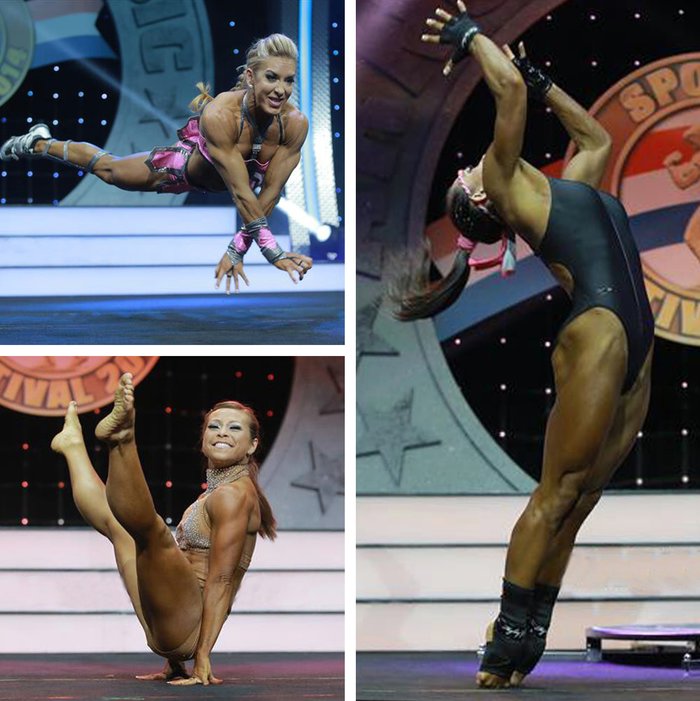
"The talent is out there," says Williamson, noting that the physique sports have always attracted former athletes who still have that itch to compete. "We were missing out on a whole group of young competitors simply because their bodies haven't matured to have the muscle required for the physique round."
The physique round is daunting to these young athletes. Over the years, the bodies of fitness competitors have kept up with their figure counterparts in terms of muscle size, symmetry, and conditioning. Officials and promoters believe they can now find local contestants through gymnastics and cheerleading now that competitors don't have to worry about having figure-level muscle to win.
But the new rule is for amateur competition only. The body round is still one-third of the score in pro competition. For amateur competitors, there will be plenty of time after they earn their pro cards to build their physiques and do callouts.
"They don't realize the changes their body can make," Williamson says.
In reality, this is exactly what happens to most new fitness pros—they win their pro card, then take a couple of years to work on their physiques before stepping back onstage, no matter how pro-ready their routines are.
"We're trying it for a year, to see how it goes," says Williamson. "Let's see if we get the interest. Then, we'll see what changes we have to implement. We don't want to see fitness die, and if you're a promoter, it's such an awesome way to open your show."
Promoting their passion
The fitness pros are a tight-knit, passionate group, and they know it will take more than a rule change to populate the amateur shows. Tanji Johnson Bridgeman started her "Save Fitness" campaign not long after the exodus to figure began, with some success.
"I was very effective in the Pacific Northwest," says Bridgeman, who was a top pro for 15 years, with 11 wins, including the Fitness International in 2013. "The fitness numbers were dwindling to one or two per show, and I was able to train and bring 3-5 athletes to selected shows." Bridgeman has helped over 10 women get to the pro fitness stage, with two of them making it all the way to Olympia.
The current crop of pros is building exponentially on Bridgeman's success. Their campaign, "This Is Fitness," provides information on all things competitive fitness, with photos, how-to videos, testimonials, and lots of general information about the sport on the This Is Fitness Facebook page. They are determined to close the PR gap.
At the Arnold Sports Festival in March, This Is kicked it up a notch with help from ASF promoter Bob Lorimer, staging a seminar and Q&A session in the main auditorium.
"Bob offered us a forum for the IFBB pro fitness competitors and made it part of the Arnold Showcase," says Blank. "It went well, and you can't beat the backdrop of the Arnold stage for video! We converted the only pro figure girl in China to fitness!"
It's a great time to get into fitness
Veteran Whitney Jones is the new Fitness International champ and a leading candidate to succeed Oksana Grishina at the 2018 Olympia.
"This is a great time to be getting into fitness," she says. "The seminar was extremely beneficial for helping introduce others to the division and understanding that you don't have to be a level 10 gymnast or have started dance classes at the age of 3 to compete in fitness. Many people believe this until they hear that the top pros come from all walks of life."
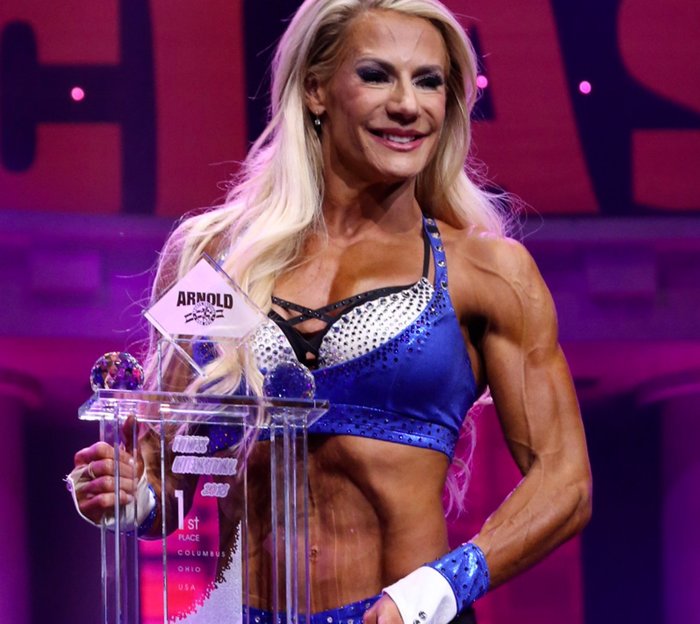
Like Johnson Bridgeman, the Arizona-based Jones is bringing her enthusiasm to a new generation. "I currently train 26 fitness athletes, doing their choreography as well as nutrition and overall prep," she says. "It has been very exciting to see the interest."
The new champ has some simple advice for the fitness-curious: "If you have the desire and passion to hit the fitness stage and you highlight what it is you personally are great at, you can compete in fitness. If you're good at dance, make it a dynamic and entertaining performance. If you have any gymnastics experience, show off your tumbling and balance and handstand skills. If you have decent strength, translate that into some exciting strength moves or push-up combos. This is a division that allows you to constantly grow and challenge yourself as each year you improve your skills and bring new things to the stage."
Jones is eager to share her division with newcomers and veterans alike. "Let's be honest, our division is a ton of fun," she points out. "And the lifelong friendships and camaraderie is one of the highlights."
Looking for a fitness show?
You'll find info on entry-level competitions at most of the national physique competition websites, but check the social media pages of your local promoters to find shows in your area.
"All the states have to have fitness in a couple of shows," says Williamson. "And most promoters will add it in a heartbeat if they get a call from an athlete—or from a trainer who says, "I have two fitness competitors, but I don't see fitness on your program."
Opportunities are out there. Grab them if you believe you're up to the challenge!

